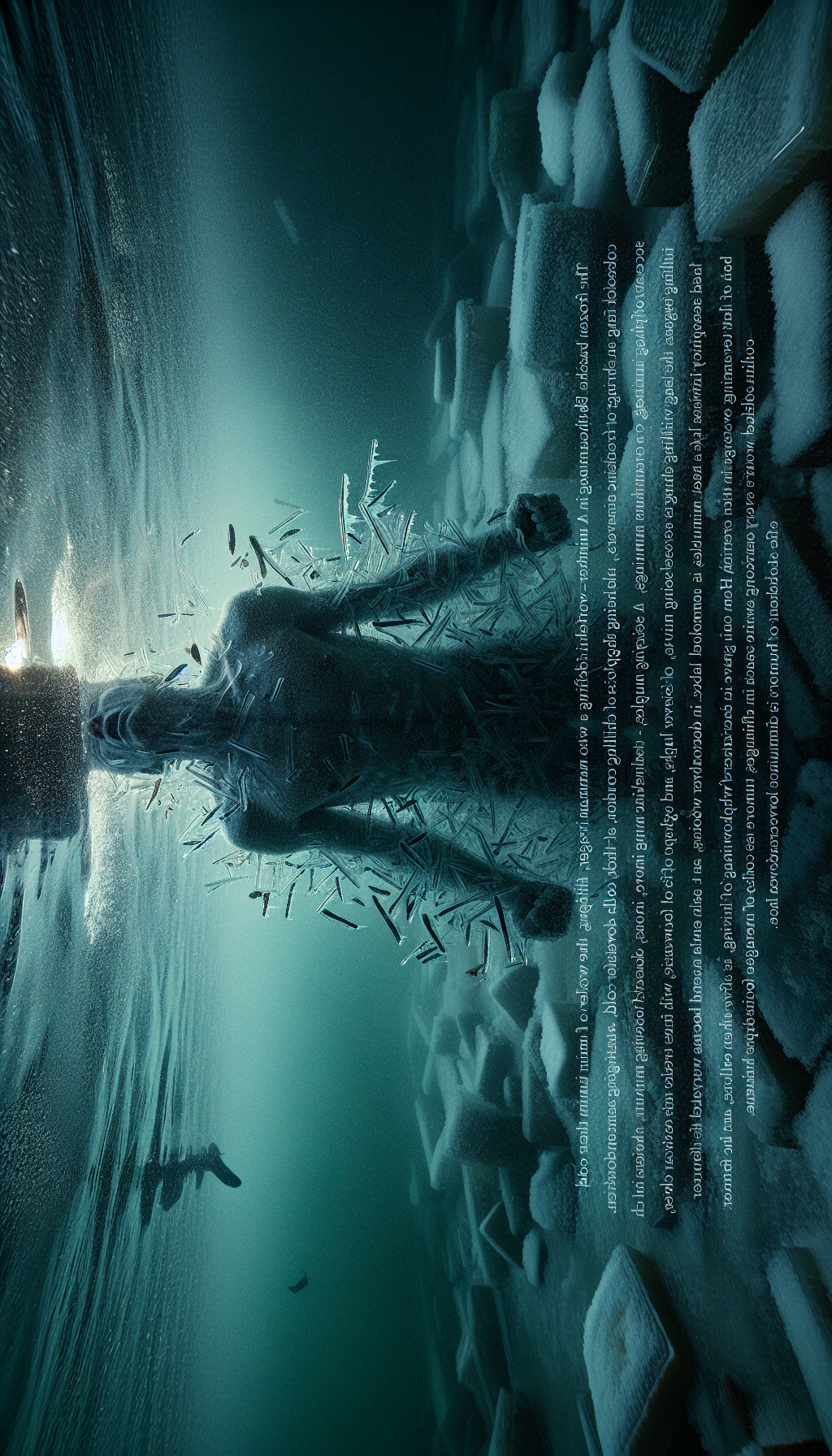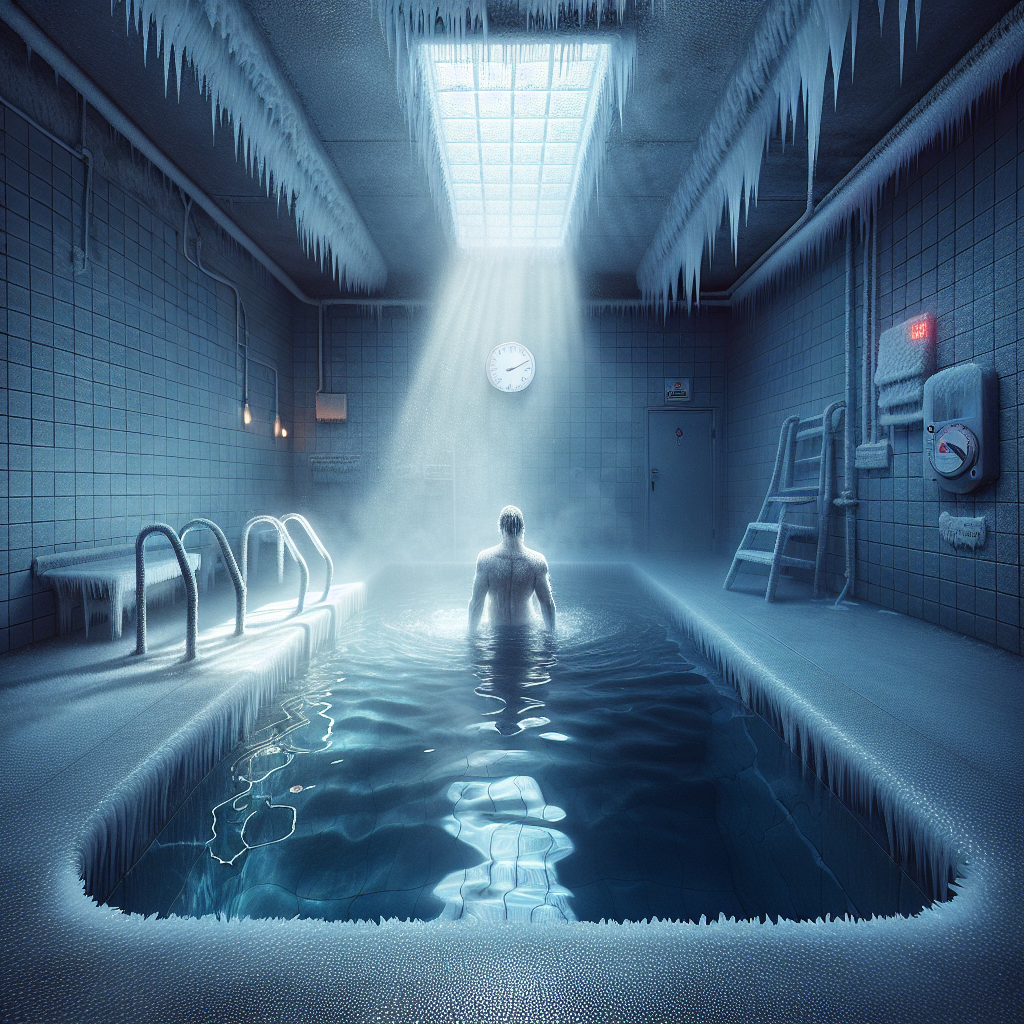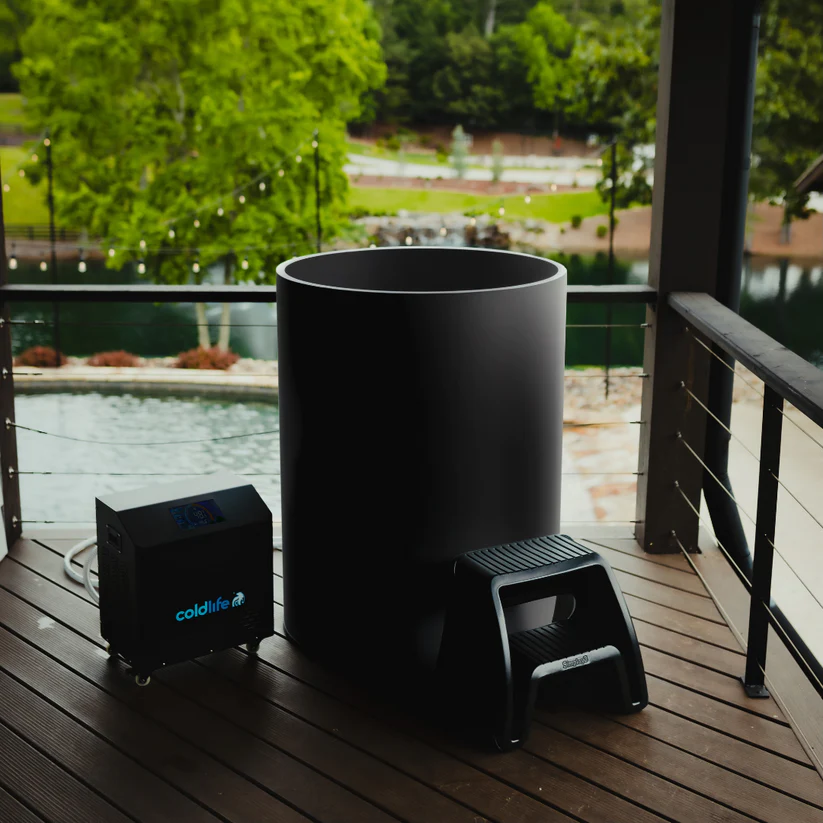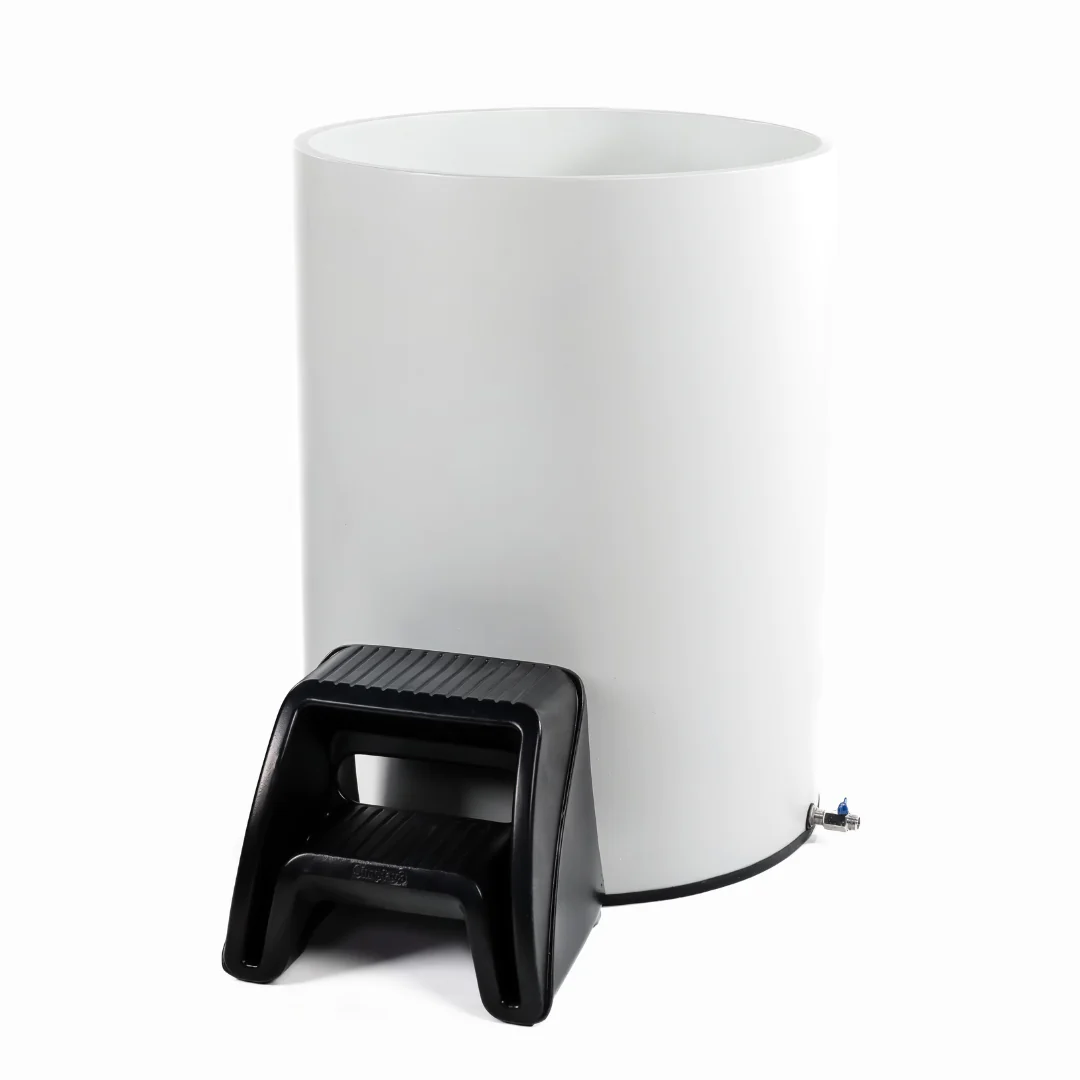Key Takeaways – What are the cons of cold plunge
1. Proceed with caution and build up tolerance
So, like, you know how jumping into a freezing ice bath can be a bit of a shock to the system? Yeah, that initial discomfort is totally normal. To avoid any major issues, it’s super important to start slow with cold plunging and gradually build up your tolerance. Consistency is key here, folks!
2. Be aware of the risks involved
Okay, let’s get real for a sec – cold plunging isn’t all rainbows and butterflies. There are some serious risks involved like hypothermia and cardiovascular events that you need to be aware of. It’s not just about feeling invigorated; it’s about staying safe too.
3. Consult with a professional before diving in
Before you take the plunge (pun intended), make sure to chat with a healthcare professional first. They can help you assess whether cold water immersion is right for you based on your individual health conditions and needs. It’s better to be safe than sorry, right?
Our #1 Best Recommended Cold Plunge
Discover the amazing benefits of the ColdLife Plunge 1 at our online store. If you’re keen on getting more value, check out the exclusive Cold Life Plunge Bundle that gives you more for less! Don’t wait, tap into the cold for a better life journey today.Are you ready to redefine your limits with cold immersion?
Explore the compelling truth behind cold plunging and its remarkable benefits for mind and body.
Dive into the Cold Life Plunge Bundle now to embark on your journey to revitalization and strength. Transform your life today!
Here’s a Youtube Video about What are the cons of cold plunge
What are the cons of cold plunge? While cold plunges are popular for their potential to boost metabolism, enhance mood, and improve sleep quality, it’s essential to understand the possible drawbacks.
The most significant risk involves hypothermia, a potentially fatal condition resulting from prolonged exposure to low temperatures.
Another concern is the impact on cardiovascular health; sudden immersion in cold water can induce stress on your heart and blood vessels.
There’s also the risk of non-freezing cold injury, which can trigger permanent tissue damage even without freezing.
A less known side effect includes muscle contraction that can lead to cramps or strains during your post-plunge recovery.
The combination of meditation and breathwork with cold-water immersion is gaining popularity, but its benefits remain uncertain due to limited scientific research.
Considering these risks, always take precautions before incorporating cold plunges into your routine; seek professional advice if necessary.

Understanding the Risk of Hypothermia with Cold Plunge
Navigating the drawbacks of cold plunge, the risk of hypothermia is a tangible threat that arises from prolonged exposure to chilly water. With the human body losing heat faster than it can produce, hypothermia becomes a daunting reality.
By the way, it’s crucial to understand that not everyone’s body responds similarly to low temperatures—variations such as individual tolerance and acclimatization play significant roles.
The Impact of Cold Plunge on Cardiovascular Health
Now that I think about it, another incremental concern amongst negative effects of cold plunge is its potential harm to cardiovascular health. The sudden change in temperature when entering icy water can lead to cardiovascular events or dysfunction – typically characterized by rapid increase in heart rate and blood pressure.
In fact, even American Heart Association warns about this abrupt surge in circulatory metrics due to cold plunging.

Download this courtesy guide to optimize your sauna and cold plunge experience and health optimization.
Download the Free Guide TodayAssessing the Risk of Non-freezing Cold Injury
All things considered; one cannot overlook another significant risk associated with cold plunge– non-freezing cold injury. This happens when no clear demarcation identifies how much exposure is too much.
Dipping into intensely frigid environments like ice- or snow-covered lakes might manifest risks such as frostbite.
Unveiling the Connection between Cold Plunge and Muscle Contraction
One noteworthy disadvantage of cold plunge is its impact on muscle contraction. Unlike heat’s relaxing effect on muscles, plunging into cold water causes them to contract.
You see, this can exacerbate stiffness or tightness if exercised immediately after intense physical activity. Thus questioning the popular belief of eased muscle soreness post-workout.
Dissecting the Uncertain Benefits of Combining Meditation and Breathwork with Cold-water Immersion
In any case, there have been some suggestions that combining practices like meditation and breathwork with cold-water immersion may support immune function. However, these benefits are not always certain due to the individual variability in responses towards this therapy.
The uncertain benefits make this an area requiring further exploration.
Precautions before Incorporating Cold Plunges into Your Routine
Pondering over why not to do a cold plunge, it’s evident that one must consider their health conditions before incorporating this therapy into their routine considering its various drawbacks.
Naturally, always consult with a healthcare professional before trying out new health practices such as these.

While understanding the consequences of cold plunges, one might also be interested in knowing how long a typical cold plunge lasts. This is essential, as overexposure to low temperatures can heighten the risks associated with cold plunges. At the same time, it’s crucial to discern whether a cold shower can substitute for a cold plunge. Being aware of these factors will help you make informed decisions about your wellness routine. Additionally, having an idea about what temperature a cold plunge needs to be is essential for maximizing its benefits and minimizing potential harm. It also pays to know what sort of chiller is being used in the cold plunge, as it significantly influences the temperature control and overall experience. Lastly, if you’re considering integrating longer immersion periods into your routine, please explore our detailed guide on how long an individual can typically stay in a cold plunge. Stay informed and find balance in your wellness journey.
My Personal Take about What are the cons of cold plunge
Hey there, friend!
It’s me, George, your go-to expert in all things saunas and cold plunges. You see, I’ve been delving into the fascinating topic of “What are the cons of cold plunge?”, and after extensive research, I’ve compiled a comprehensive overview to demystify this for you.
- The sudden drop in body temperature can be a shock to your system if you’re not acclimated.
- Prolonged exposure could lead to hypothermia or frostbite.
- There are certain health conditions that may be exacerbated by the intense cold.
But don’t fret! With proper guidance and safety precautions, these cons become mere trivials. Now that I think about it, imagine stepping out of a hot sauna and plunging into icy water – it’s rejuvenating, exhilarating even. The combination of heat therapy from the sauna melting away your stress followed by an instant invigorating rush from the cold plunge is simply indescribable! So friends, why not give it a whirl? There’s a whole world of wellness waiting for you.
Our #1 Best Recommended Cold Plunge for most People
While the ColdLife Plunge 1 offers numerous benefits, it’s essential to consider the potential cons of cold plunge therapy as well. Despite its popularity, certain drawbacks can emerge depending on the individual and their specific health circumstances. Additionally, for those considering an investment into a more comprehensive set like Cold Life Plunge Bundle, understanding these cons is crucial before making a commitment.Discover the unparalleled benefits of cold immersion with ColdLife Plunge 1. Unleash your full potential with our innovative cold plunging solution. Explore the transformative effects on your body and mind. Elevate your lifestyle with ColdLife Plunge 1 today!
Frequently Asked Questions about What are the cons of cold plunge
1. Is cold plunging safe for everyone?
Cold plunging can be risky for individuals with certain health conditions, so it’s important to consult with a healthcare professional before trying it out.
2. Can cold plunging lead to hypothermia?
Prolonged exposure to cold water during a plunge could potentially result in hypothermia, so it’s crucial to monitor your time in the water.
3. Are there any cardiovascular risks associated with cold plunges?
Entering very cold water can cause a shock to the body which may lead to increased heart rate, blood pressure, and other cardiovascular issues, therefore caution is advised.
4. Can muscle contraction be affected by cold plunging?
Cold immersion can cause muscles to contract rather than relax like with heat therapy, potentially impacting stiffness or tightness after intense physical activity.
5. Is there a risk of frostbite when participating in ice baths?
If one is submerged in very cold conditions such as an icy lake, they may be at risk for frostbite due to prolonged exposure – staying aware of this is crucial.
6. Are there any known benefits of combining meditation and breathwork with cold-water immersion?
Some studies suggest that integrating practices like meditation and breathwork could support immune function when paired with ice baths; however individual responses may vary so consistency and caution are advised when exploring these options.
Now you know What are the cons of cold plunge , but that’s only the beginning of your journey here at Sweat N Chill Zone. If you found this post useful there’s more to learn to get you to the next step of your sauna & cold plunge journey. If you read our next articles you’ll be a step further than most people.
Before you go…
1. Proceed with caution and build up tolerance
So, like, you know how jumping into a freezing ice bath can be a bit of a shock to the system? Yeah, that initial discomfort is totally normal. To avoid any major issues, it’s super important to start slow with cold plunging and gradually build up your tolerance. Consistency is key here, folks!
2. Be aware of the risks involved
Okay, let’s get real for a sec – cold plunging isn’t all rainbows and butterflies. There are some serious risks involved like hypothermia and cardiovascular events that you need to be aware of. It’s not just about feeling invigorated; it’s about staying safe too.
3. Consult with a professional before diving in
Before you take the plunge (pun intended), make sure to chat with a healthcare professional first. They can help you assess whether cold water immersion is right for you based on your individual health conditions and needs. It’s better to be safe than sorry, right?
Start your journey towards a transformative experience by understanding what a cold plunge transformation is, and then find out the best cold plunge temperature to achieve optimal results. From there, you can learn the best way to start your cold plunge, explore different techniques in our guide on the best ways to cold plunge, and understand how it helps in combating free radicals in your body.George From Sweat N Chill Zone
George, the passionate founder of Sweat N Chill Zone, is an ardent advocate for holistic wellness through the healing powers of saunas and cold plunges. With a background in health sciences and a fervent dedication to sharing the benefits of thermal therapy, George curates an informative space, offering insights, tips, and expert advice to help individuals optimize their health and well-being through the transformative effects of heat and cold treatments. Through Sweat N Chill Zone, George aims to inspire and educate, fostering a community centered around rejuvenation and vitality.
Download this courtesy guide to optimize your sauna and cold plunge experience and health optimization.
Download the Free Guide Today



